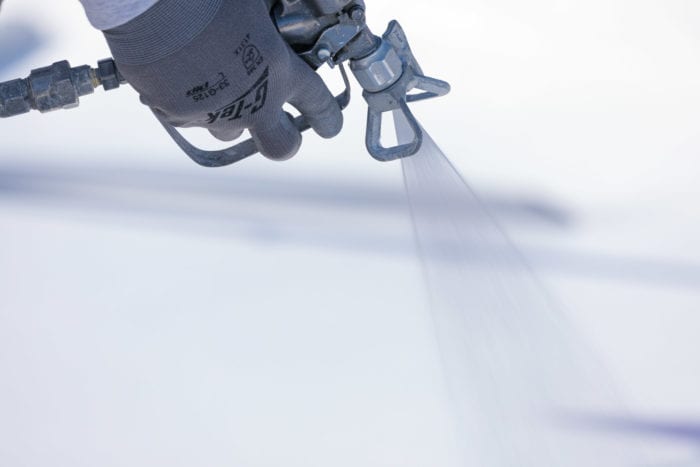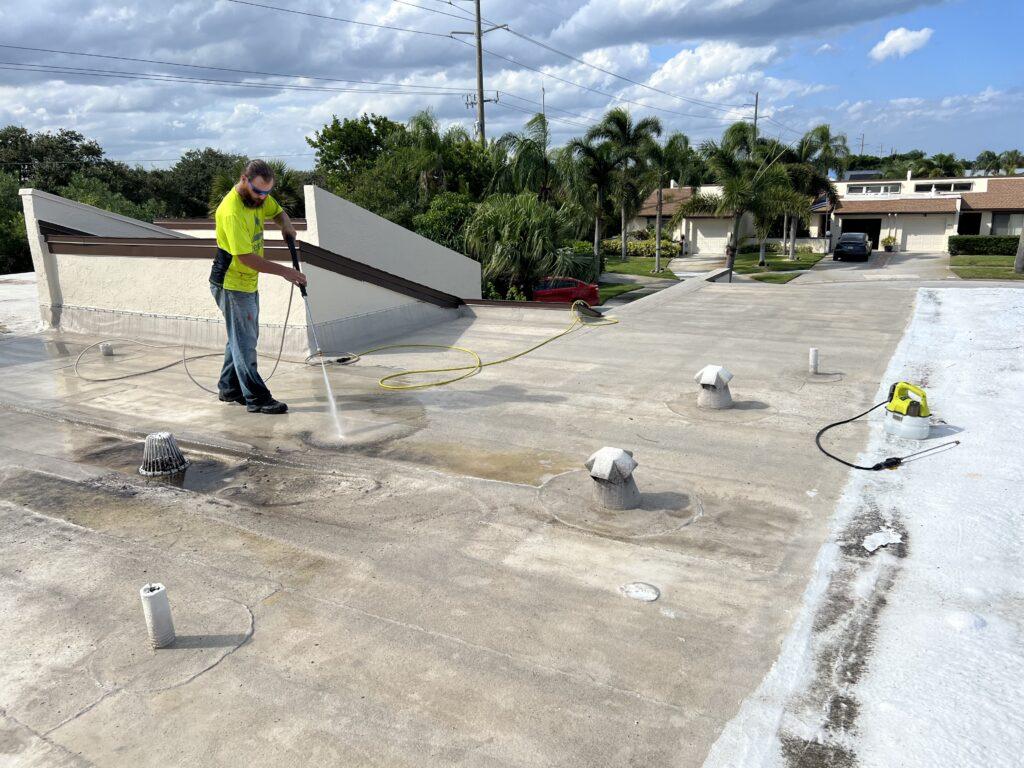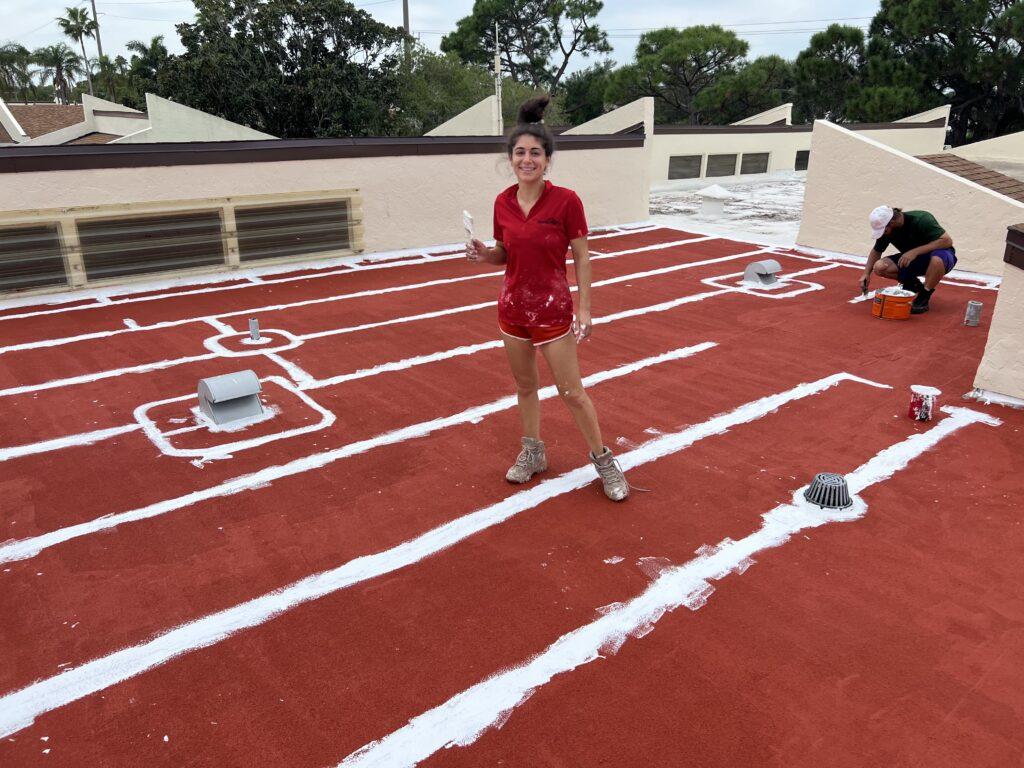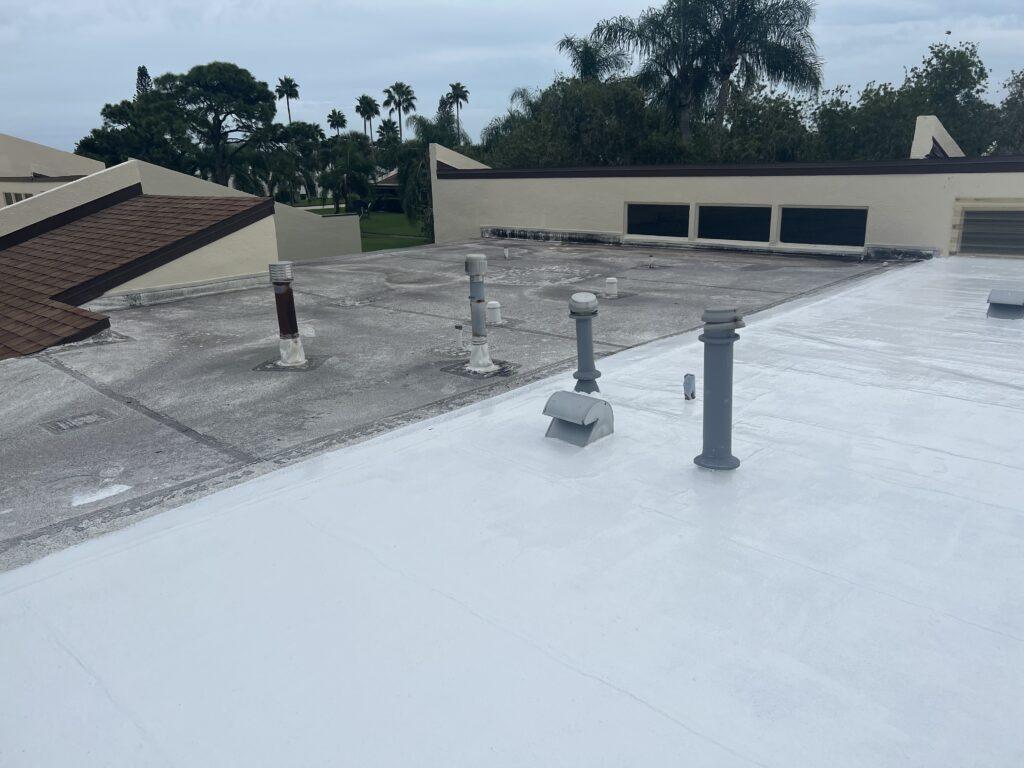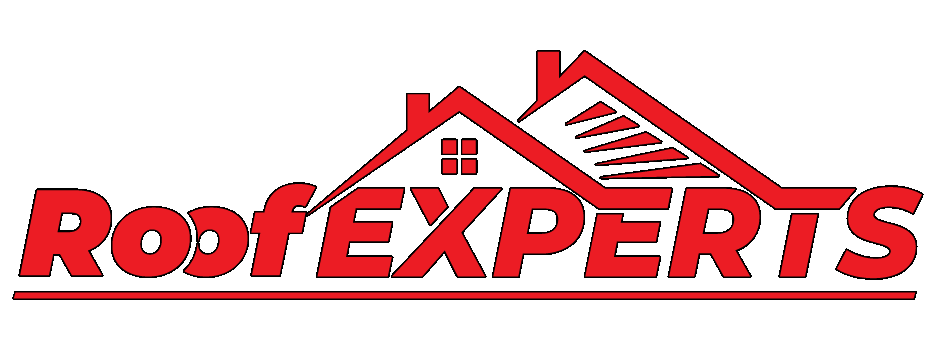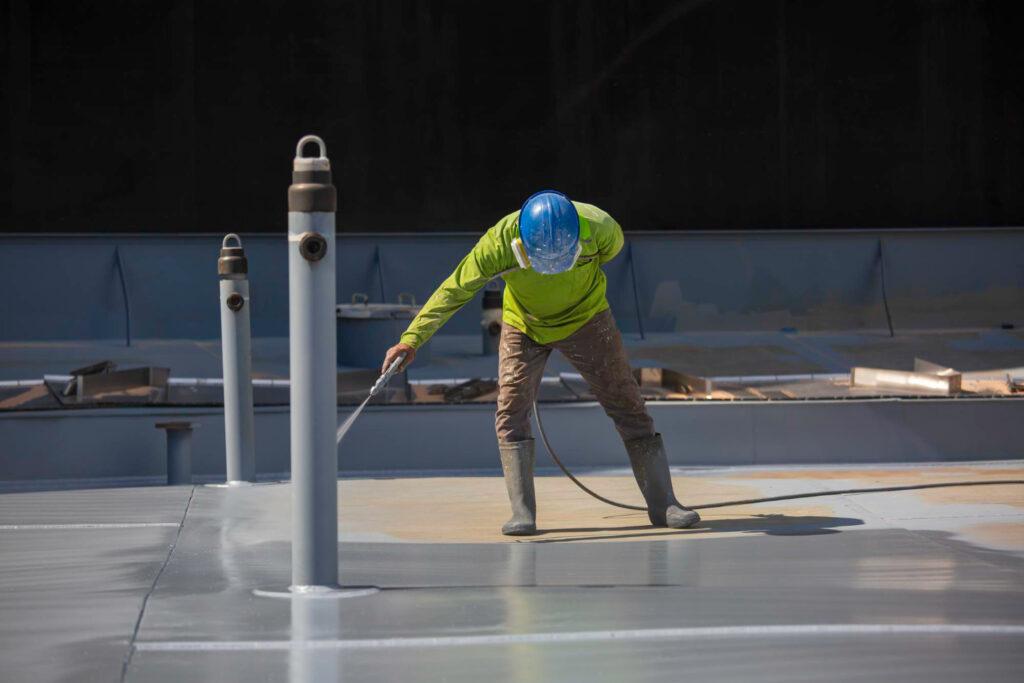
Fluid Roofs
Fluid roofs are a cutting-edge roofing system that offers many advantages compared to traditional methods. By applying a liquid membrane directly onto the roof surface, a seamless and robust barrier is created, providing exceptional protection for the building.
Fluid applied roofing is an ideal choice for commercial and industrial buildings, offering reliable, long-lasting performance that safeguards your investment and ensures the longevity of your roof
